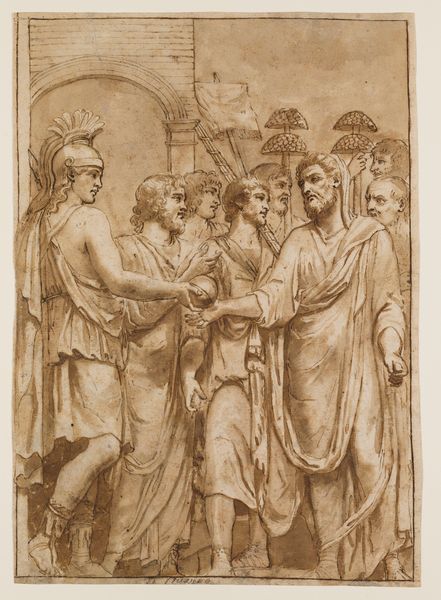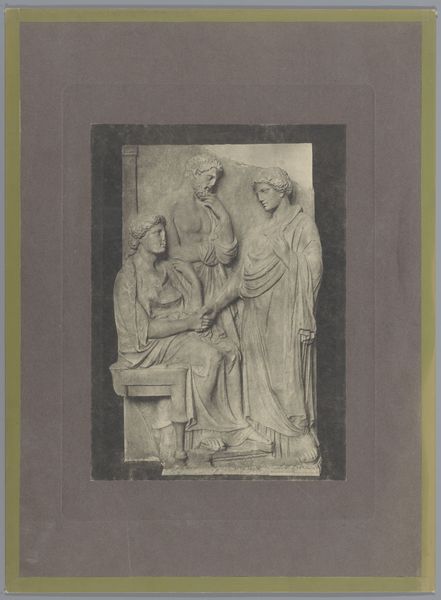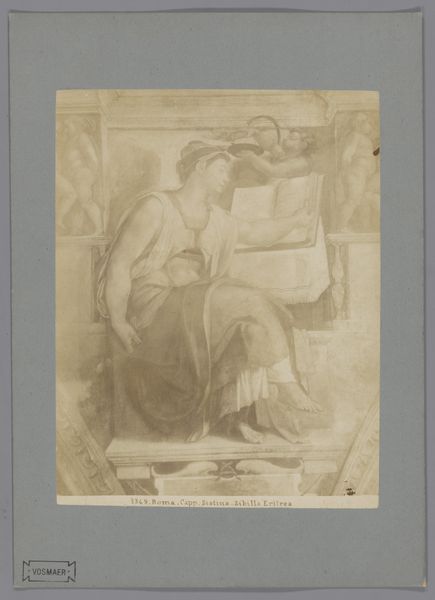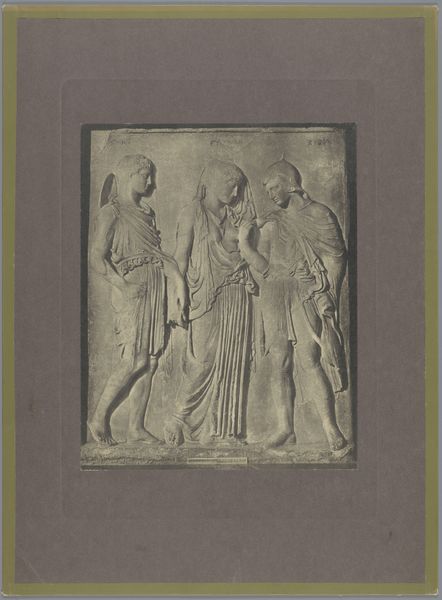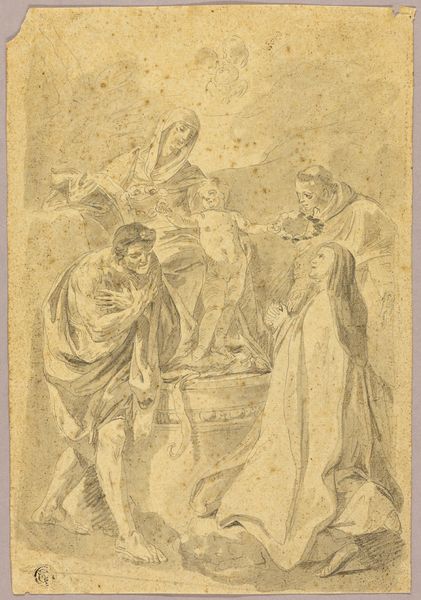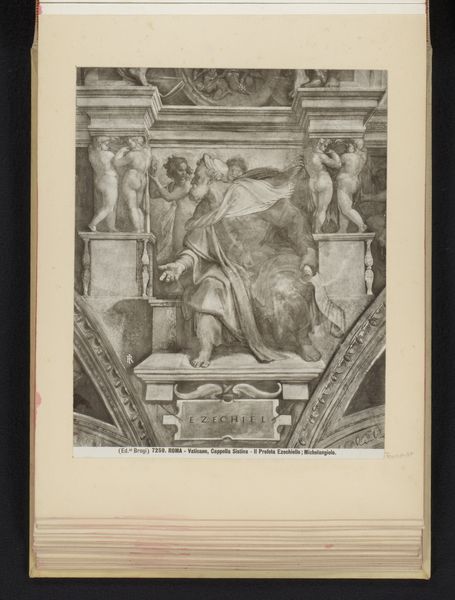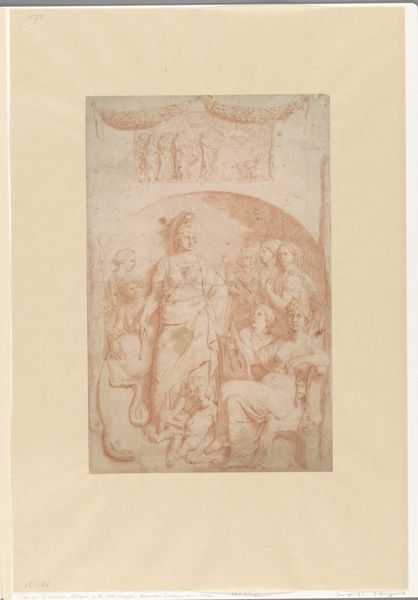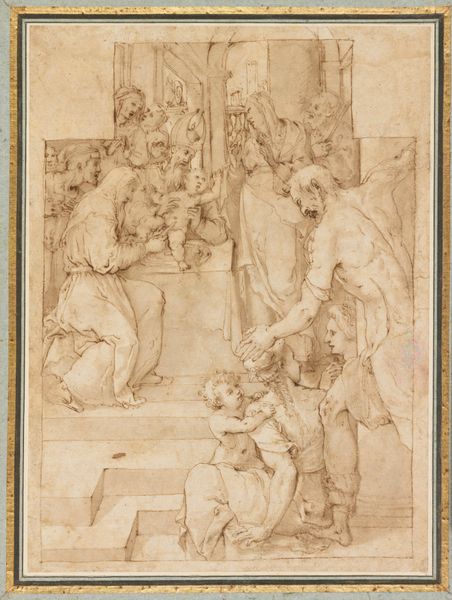
Reliëf van Marcus Aurelius die het symbool van de keizerlijke macht ontvangt in de Capitolijnse Musea te Rome, Italië 1852 - 1900
0:00
0:00
print, relief, photography, gelatin-silver-print
#
portrait
# print
#
greek-and-roman-art
#
relief
#
photography
#
gelatin-silver-print
#
history-painting
Dimensions: height 252 mm, width 195 mm, height 354 mm, width 255 mm
Copyright: Rijks Museum: Open Domain
Editor: So, this is a photograph of a relief titled "Marcus Aurelius Receiving the Symbol of Imperial Power," taken sometime between 1852 and 1900 by Fratelli Alinari. It looks pretty formal and staged to me. What catches your eye when you look at it? Curator: The photograph itself captures a very particular interpretation of power and authority through symbols deeply embedded in Roman culture. Notice how the figures surrounding Marcus Aurelius, with their carefully draped togas and controlled gestures, are consciously evoking the senate and the gravitas of Roman law. It speaks to the cultural memory, the continuity they wished to project. What do you make of the central figures’ hand clasp? Editor: It seems to represent agreement or transfer, a visual shorthand for succession. Is that accurate? Curator: Exactly. Hand gestures are powerful symbols – a touch can signify not just agreement, but also the passing of power or even divine grace. It harkens back to the idea of *dextrarum iunctio*, a ritual act symbolizing loyalty and obligation. Do you see anything else reminiscent of a familiar theme? Editor: Maybe, something about sacrifice and legacy? The image feels idealized, but almost frozen in time. It’s not dynamic; it's as if everything important already happened. Curator: Yes, it encapsulates a past grandeur, selectively preserved for posterity. The way light falls across the relief emphasizes its permanence. We learn not only about Marcus Aurelius, but about the values this image-making strives to immortalize. It makes me consider our responsibility when interpreting history through art. Editor: I hadn’t thought about it like that! I’ll certainly remember that the photograph is *also* an interpretation.
Comments
No comments
Be the first to comment and join the conversation on the ultimate creative platform.
